Story and photos by Jonathan Sharp
The British Motor Museum, located in the rolling Warwickshire countryside (not to be confused with the National Motor Museum in Hampshire), opened in 1993 and tells the story of the British Motor Industry. The museum was established by the British Motor Industry Heritage Trust to house its collection of almost 300 vehicles and its vast motoring archive, which had outgrown the two original locations in Studley in Warwickshire, and Syon Park in London. The Trust’s mission is to keep the memory of the British Motor Industry alive, and to tell its story to all.
So you may ask “What is an article about the British Motor Industry doing in VeloceToday?” In a nut shell, it is a very interesting museum containing many unique and intriguing exhibits that we are sure will be familiar to many of our readers. I was especially drawn to the prototypes, the what-could-have-beens, and the race cars and record breakers. We’ll break this into two parts, and this week we’ll begin with race and rally cars.
Around the inner edge of the museum is a very detailed time line telling the story of the British Motor industry, using many familiar, and some not so familiar vehicles. The cars that grabbed most of my attention are mainly arranged in the central display area. At the time of my visit the mezzanine floor above the main display hall contained an interesting exhibit which I hope to return to at a later date.
To the left of the art deco-inspired main museum building is a much more contemporary structure which contains the Jaguar/Daimler Heritage Trust vehicle collection, and the Collections Centre where the restorations are carried out and is used to display the vehicles of the trust not on display in the main building, another very interesting area which I will hopefully be allowed to show you later.
In the meantime, I promise that this will be the first, and only time that VeloceToday will feature a Reliant Three Wheeler! But you’ll have to wait for next week to see the Reliant.
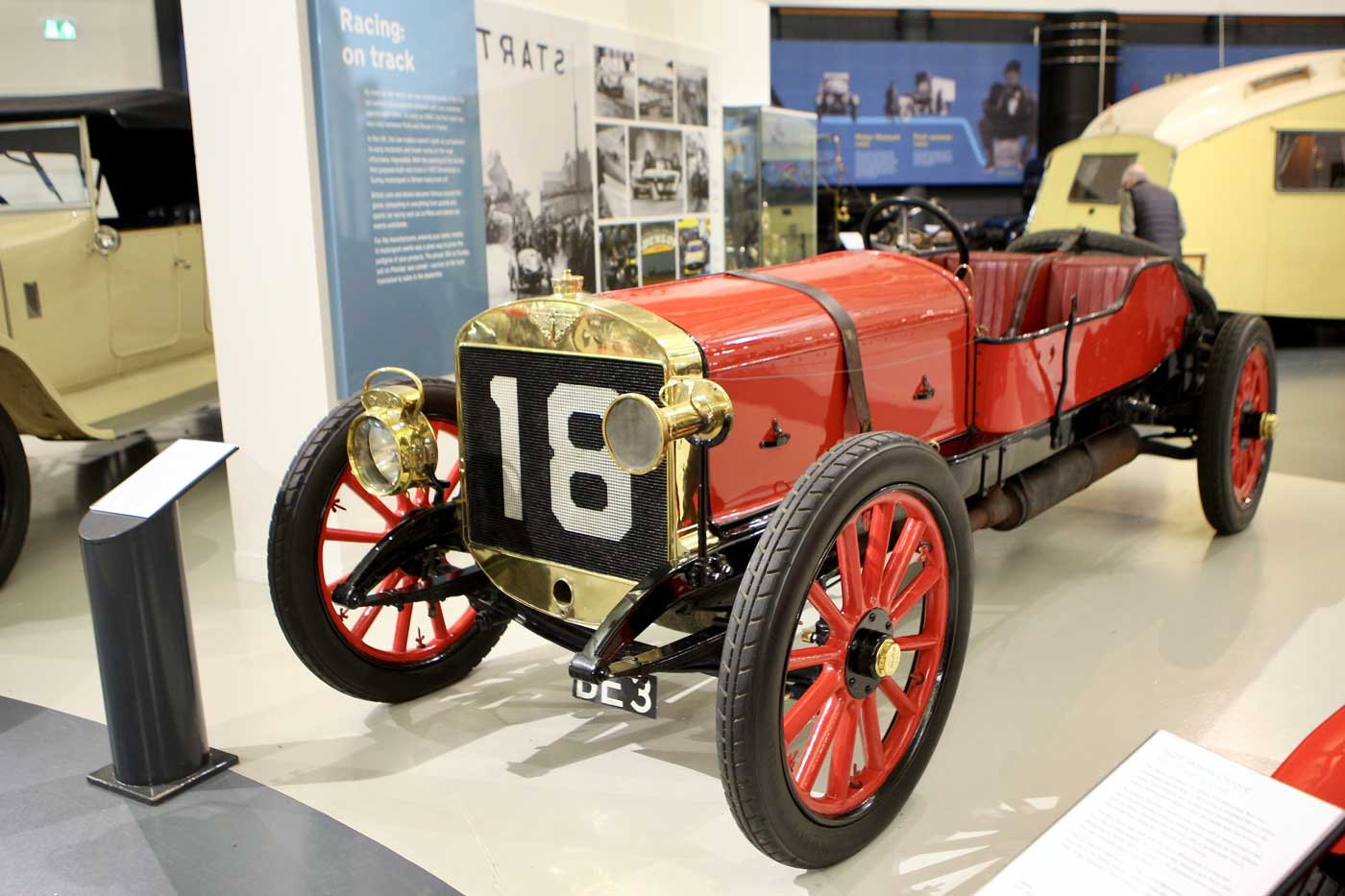
During the winter of 1907/8 Austin built a team of four 100 HP Grand Prix cars to be entered in the French Grand Prix, two of which had chain drive, the other two shaft drive. Both shaft drive cars crashed in practice with parts being amalgamated into a fifth car, a shaft drive car shown here. Three Austins made the start line, driven by Warwick Wright, Dario Resta and JTC Moore Brabazon (later Lord Brabazon of Tara). Warwick Wright was forced to retire with a seized engine but Moore-Brabazon and Resta finished in 18th and 19th places respectively and were the only British cars to finish. This was to be the team’s only appearance as the cars were sold off after the race as fast tourers. Sir Hickman Bacon, the premier Baronet of England owned this particular example for a number of years. He had a special touring body made for the car which could be swiftly removed to leave a two-seater. The car was presented to Austin by him in 1950.

Sir Herbert Austin, upset by the racing successes of MG, decided to create a factory racing team. Murray Jamieson was persuaded to job the team and was given the task of designing the ultimate Austin Seven. His first design was a record car which took the lines of a miniature Malcolm Campbell Bluebird. He added a Rootes type supercharger to the engine, boosting compression and combustion pressure so high that it took 32 studs to hold the cylinder head down. The power train of the record car was then fitted in a new frame with a body styled along the lines of an American sprint car. Very light at 8.5 cwt (431 kg) and considered to be the state of the art, the side valve Seven made its debut in 1934. Two further examples were built in 1935. One crashed at Brooklands in 1937 when Kay Petre was nudged into a spin by Parnell’s MG, an incident which virtually ended her racing career. The car shown here is the surviving sprint car often driven by Bert Hadley.

This is one of the three Austin Seven twin-cam single seater racers built between 1935-36, which have absolutely nothing in common with the production Austin Sevens. The 4 cylinder 747cc engine, designed at great expense by Murray Jamieson, had the potential to produce 116 bhp at 8590 rpm but was more often tuned to give 90 bhp at 7000 rpm. Fitted with a supercharger giving 20 lb of boost much of the engine detail was copied from the TT Vauxhall and the 8 cylinder Grand Prix Delage. Of the three built one was written off in a hill climbing accident near Bristol in 1936 but the other two have survived. This is the ex-works car as driven by Hadley, Dodson and Goodacre which much success including Goodacre winning four races on Coronation Day, 1937 at Donington. Dodson also lapped Brooklands at 121.12 mph, a 750cc class record that still stands today. Dodson also won the Empire Trophy race in 1938, and in the Trophy race the following year Hadley finished second. See Sidebar, below
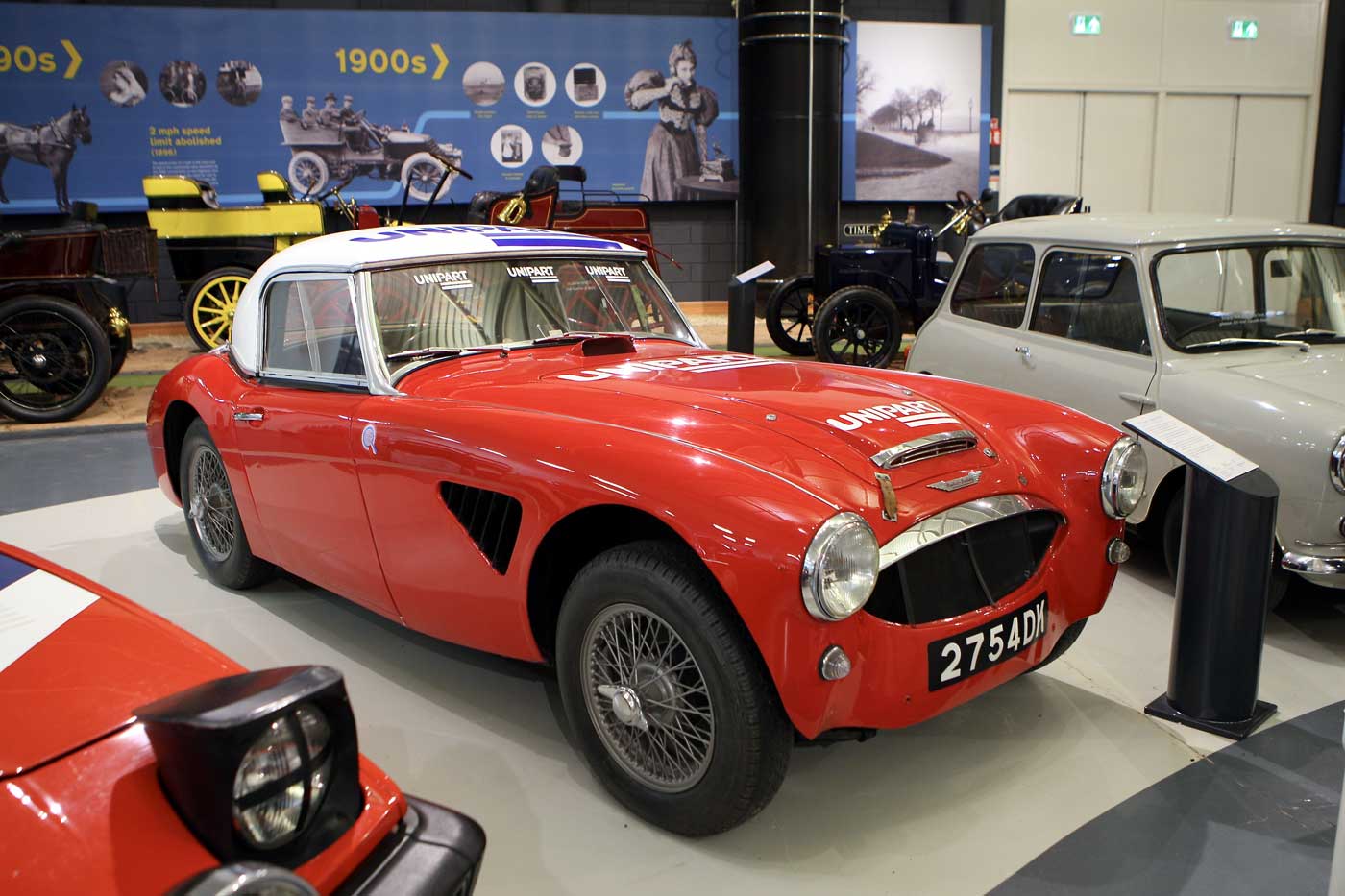
This is the very first Austin Healey 3000 produced. Built at Abingdon in 1959 and then allocated to the BMC competitions department, it was originally registered as SJB 471 and usually driven by the brothers Donald and Erle Morley. Many years after being sold by BMC, it was brought back by the Unipart Group who sponsored the editor of ‘Sporting Cars’ to attempt the Himalayan rally from which it retired after an honourable showing.

Factory prototype Jaguar D Type OVC501 was completed in May 1954 and immediately dispatched to France for the Le Mans test sessions, in which work driver Tony Rolt broke the track record by five seconds. Upon returning to Coventry OVC501 continued to be used for testing and development work.
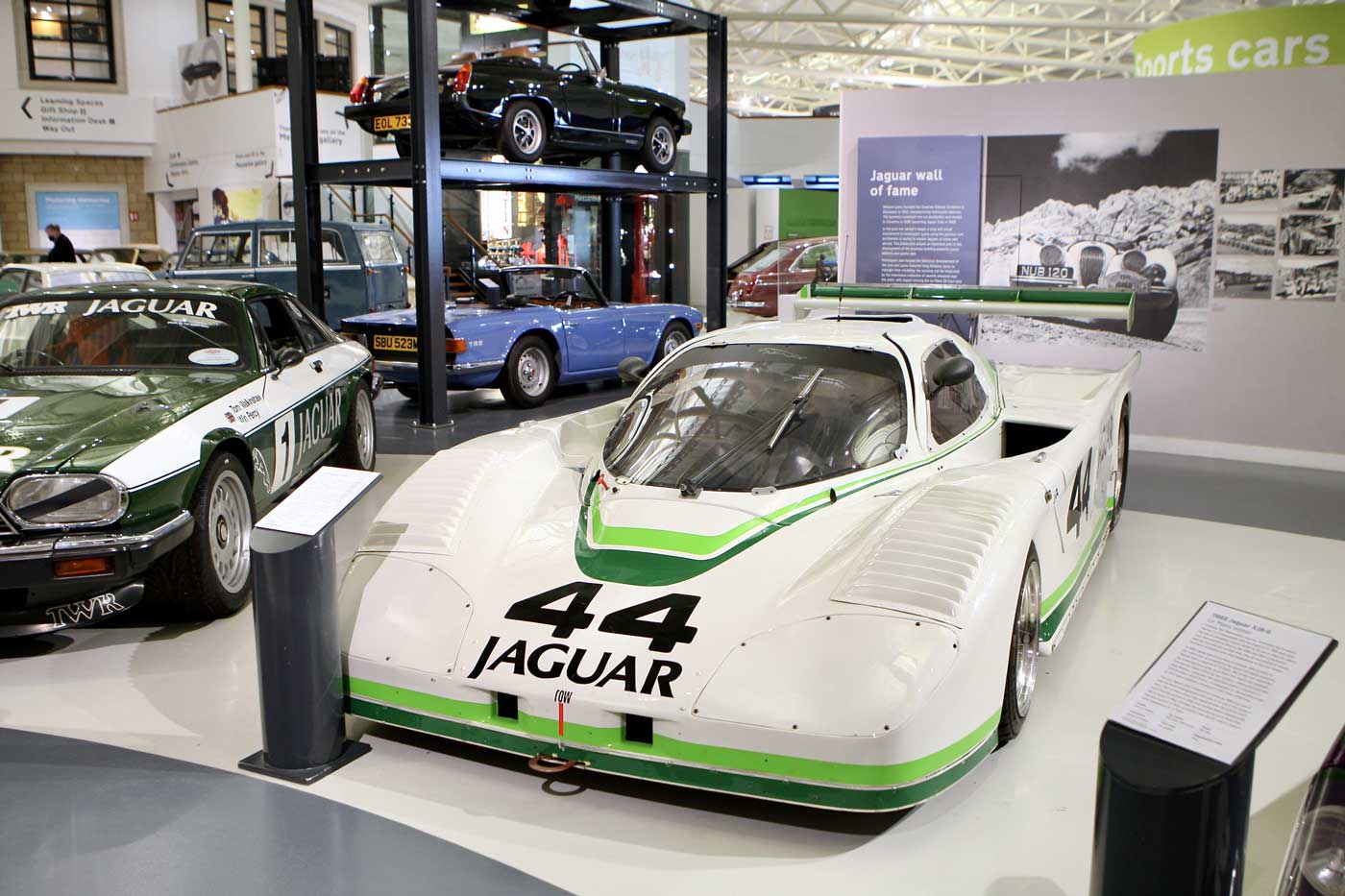
Bob Tullius’s Group 44 team had raced E Types with much success during 1974/75, and the XJ-S during 77 and 78 winning the SCCA Trans Am Championship in that year. Tullius then decided to build a mid-engined sports car based around the V12 Jaguar engine. Lee Dykstra was commissioned to design the XJR-5 which made is debit in the 1982 IMSA GTP Series, finishing third in its first race at Elkhart Lake. In 1983 the car proved more successful, taking its first win at Road Atlanta. In 1984 Tullius directed Jaguar’s return to Le Mans, their first visit since their last finish in 1963, but alas both cars entered DNF’d. The team had better luck in 1985 with Chip Robinson and Jean Claude Ballot-Lena finishing 13th.

Having had poor luck at Le Mans in 1986 and 1987, Jaguar returned to Le Man in 1988 in strength; five XJR-9s were entered, two retired but the remaining examples finished first, fourth and sixteenth. This is the winning car of Jan Lammers, Johnny Dumfries and Andy Wallace.
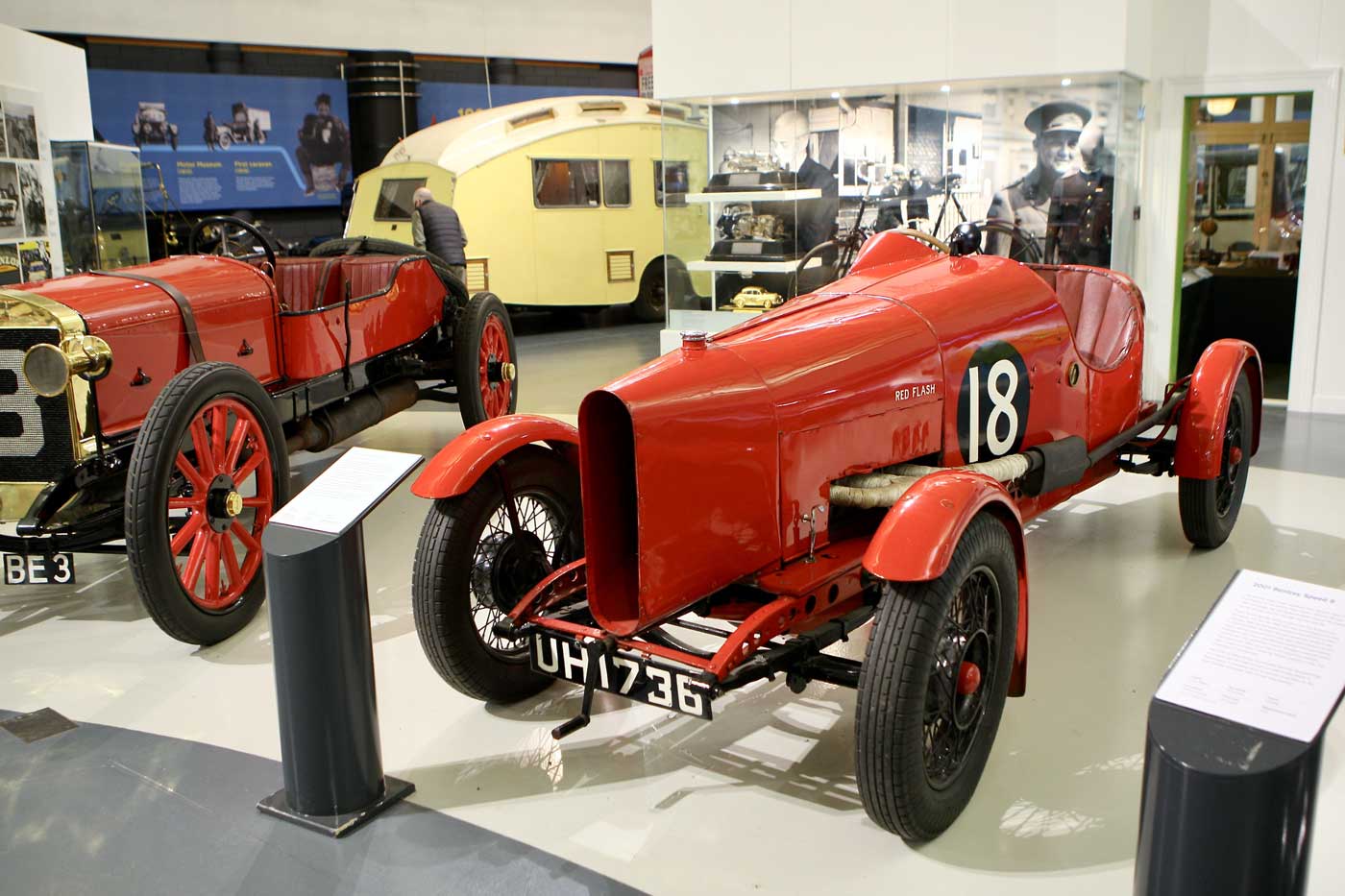
HR Wellstead, the Morris distributor Wales, had this remarkable Morris Oxford based special, the ‘Red Flash’ built in 1925, with racing at Brooklands in mind. Semi-elliptic rear springs rather than the original three quarter-elliptics were fitted and the engine was specially tuned. The original Bull nose grill was streamlined and the standard Sankey artillery wheels were replaced by wire wheels. It was then clothed with a racing body which had once graced a Gwynne Eight chassis. It was an excellent performer at Brooklands and did a standing lap of the track at over 78 mph. The Wellstead family retained the Red Flash for many years, taking part in the Motor Industry Jubilee Cavalcade at Cardiff, and it was donated to Morris Motors in 1961.
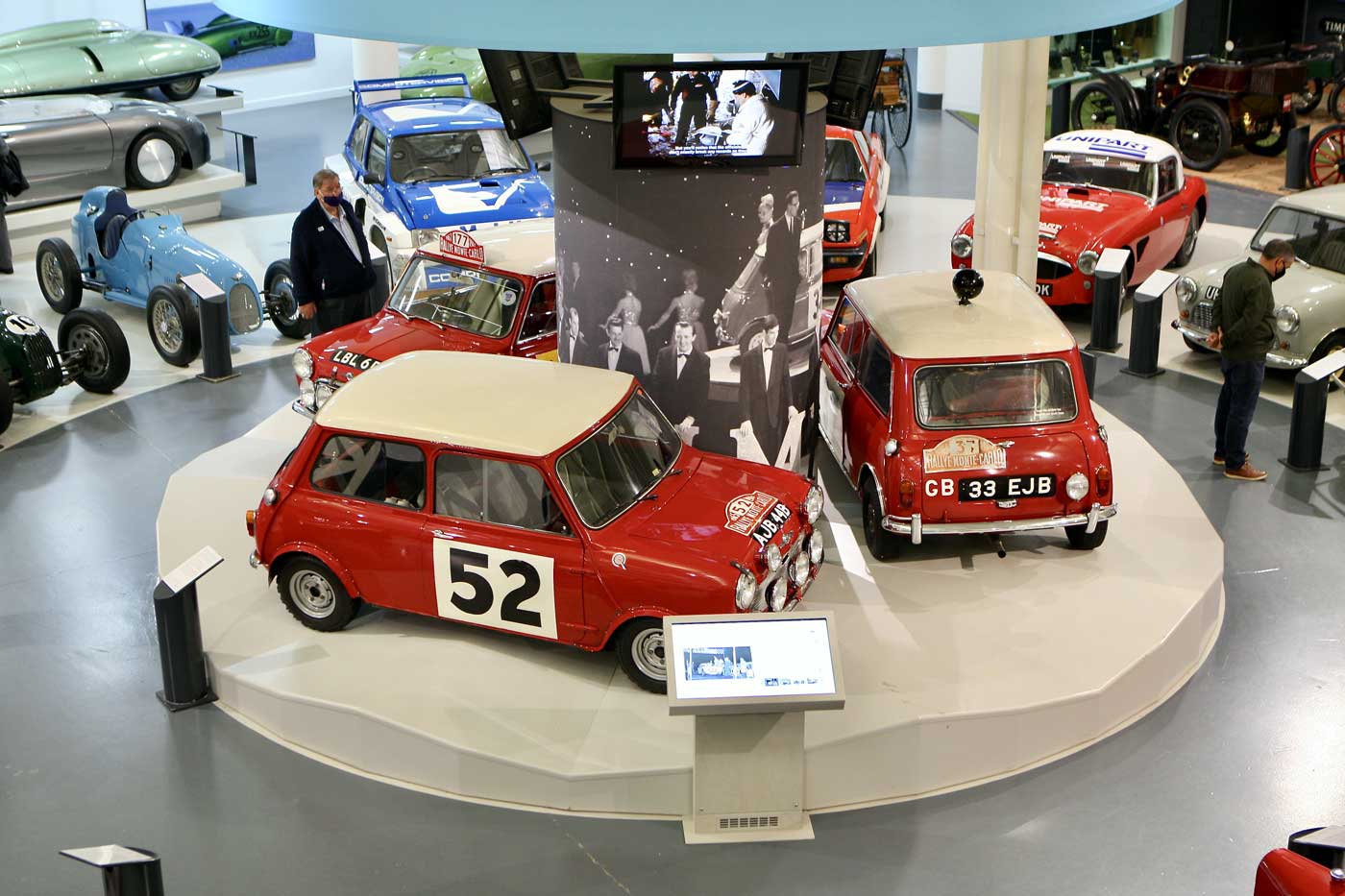
The three Monte Carlo Rally winning Minis; 1963 Morris Mini Cooper S 1071cc 33 EJB the winner in 1964, driven by Paddy Hopkirk and Henry Liddon; Morris Mini Cooper S 1275cc AJB 44B the winner in 1965, driven by Timo Makinen and Paul Easter; 1966 Morris Mini Cooper S 1275cc LBL6D, the winner in 1967 driven by Rauno Aaltonen and Henry Lidden.
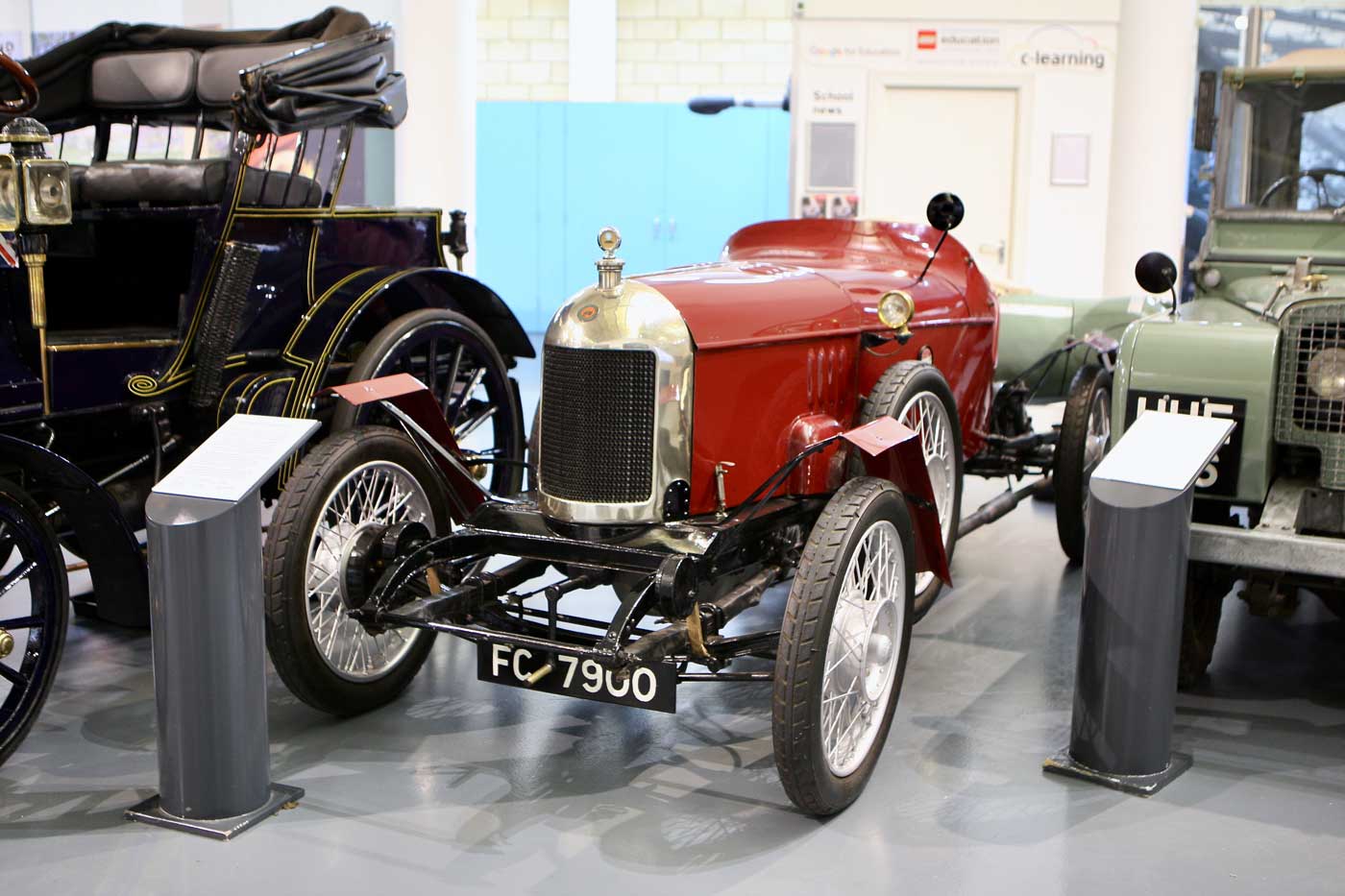
Known as ‘Old number one’ this 1925 MG is not the first MG. That honor goes to a saloon based on the Bullnose Morris that had been advertised with those initials in 1924, to be followed by several other MG sports Morris cars. This ‘Old number one’ was a one off special completed in March 1925 for Cecil Kimber, the manager of Morris Garages in Oxford, which had lent its initials to MG. Based on a standard chassis, ‘Old number one’ has coachwork by Carbodies of Coventry and is believed to have cost £279 to build. Kimber entered the MG in the Lands’ End Trial earning a Gold medal and then sold the car to Harry Turner of Stockport for £300. In 1932, having passed through several owners, MG purchased her back for £15.00.
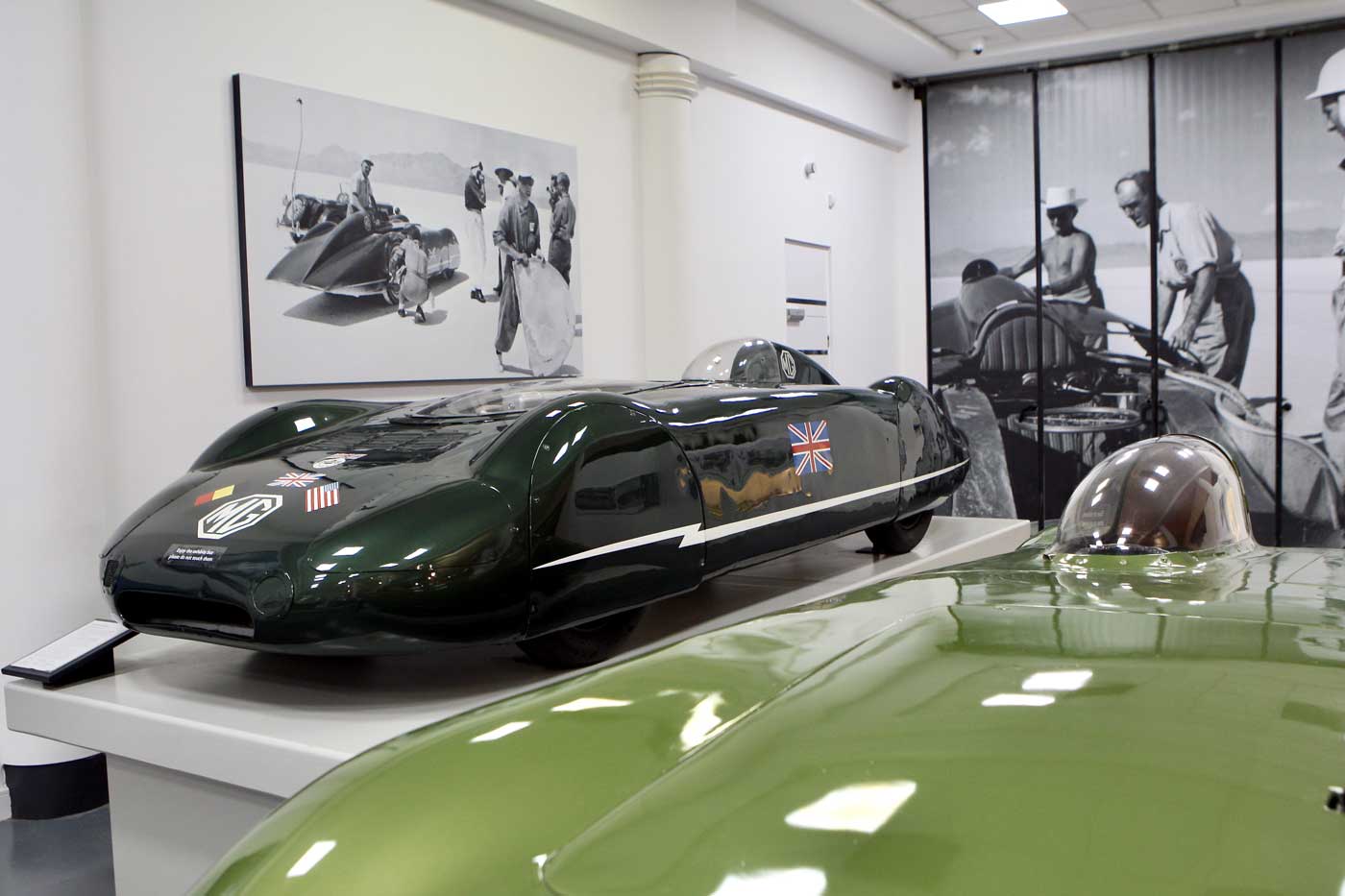
The MG EX135 started life as a standard K3 Magnette and was used by Captain George Eyston for road racing and record attempts. In 1938 MG purchased the car back from Eyston and rebuilt it in its present form to a design by Reid Railton. Lieutenant ATG ‘Goldie’ Gardner was then engaged by MG to drive EX135. In 1939, on the new Dessau Autobahn in Germany, Gardner raised the 1100cc class record to over 200 mph.

EX135 is now fitted with the supercharged 1250cc XPAG engine that was fitted in 1952 for Gardner’s last record runs on the Utah Salt Flats. The slick salt of the flats created severe wheel spin and Gardner was only able to achieve a speed of 190 mph rather than the anticipated 220 mph. On one run Gardner lost control, spun, and hit a marker post which smashed through the perspex canopy hitting him on the head, but he continued on the run.
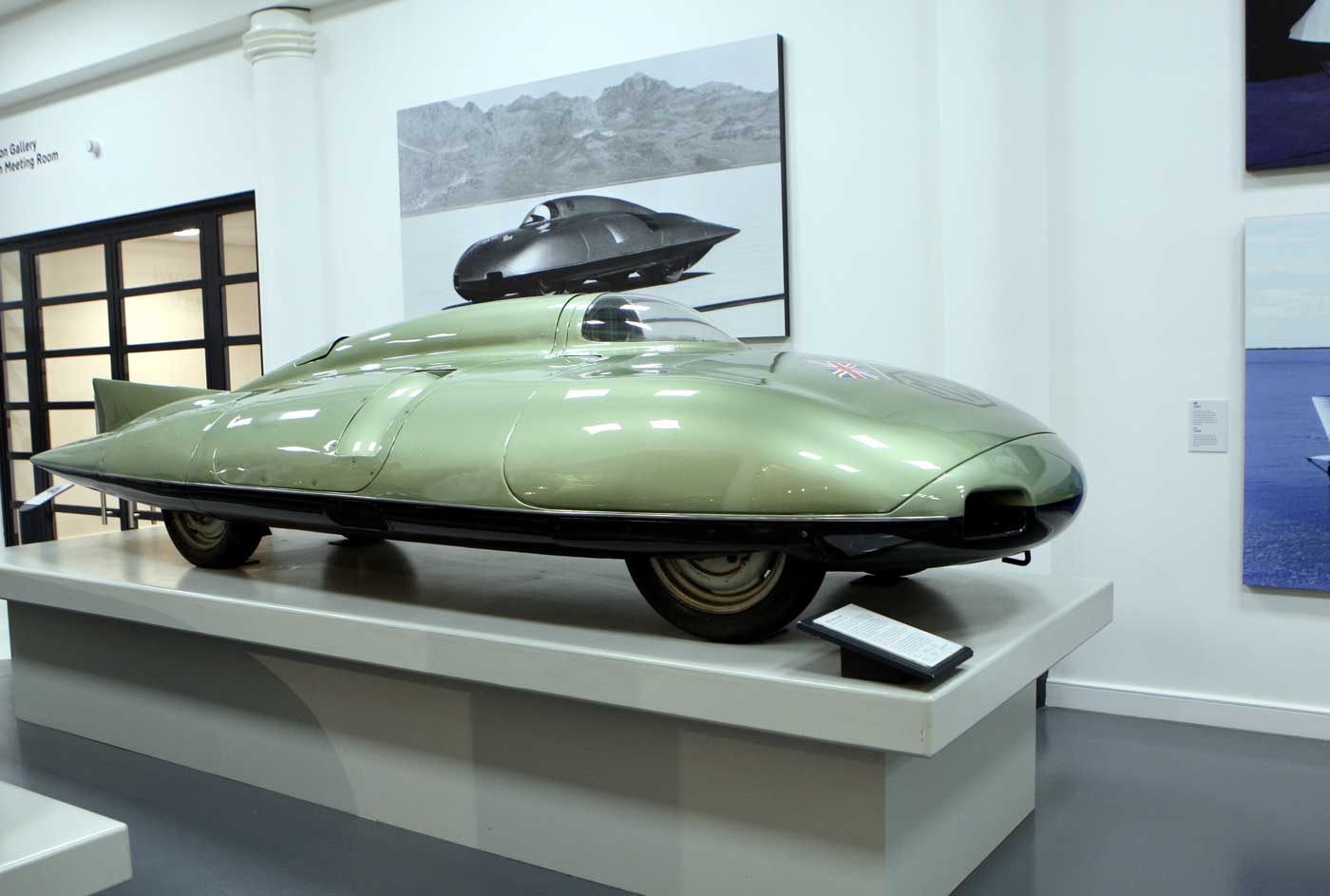
Built just for straight line speed, EX181 was the last record car built by the engineers at Abingdon. The supercharged 1500cc MGA twin cam engine is mid mounted and drives through a Riley RM series gearbox. The chassis is tubular with MGA front suspension and a de Dion rear.
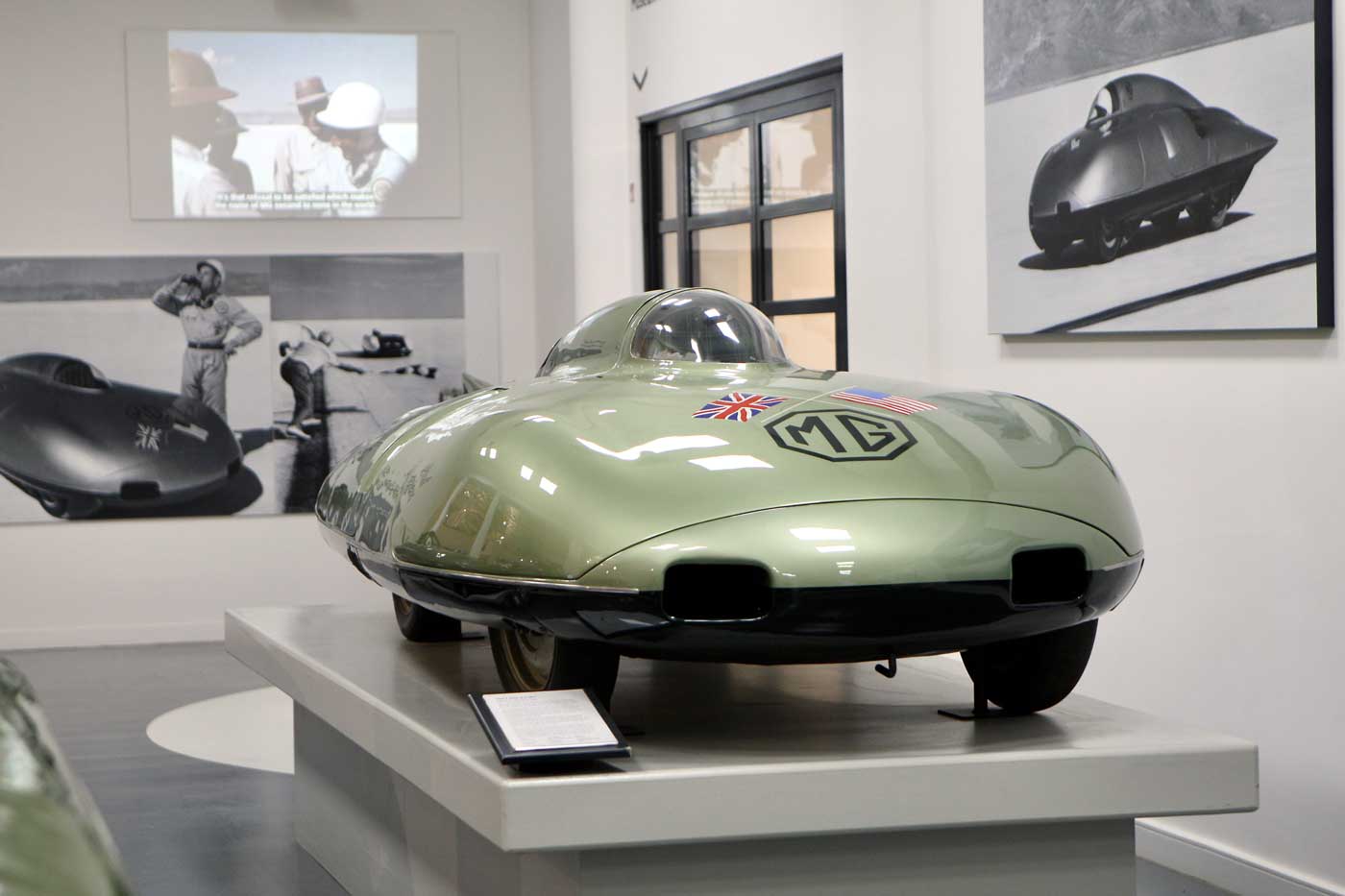
Tested extensively in the wind tunnel the cockpit is claustrophobic for the driver, and his feet are in ahead of the front wheels. In 1957 Stirling Moss achieved a speed of 245.6 mph on the Utah Salt Flats, and then two years later, with the engine capacity increased to 1506cc, Phil Hill recorded a speed of 254.9 mph.
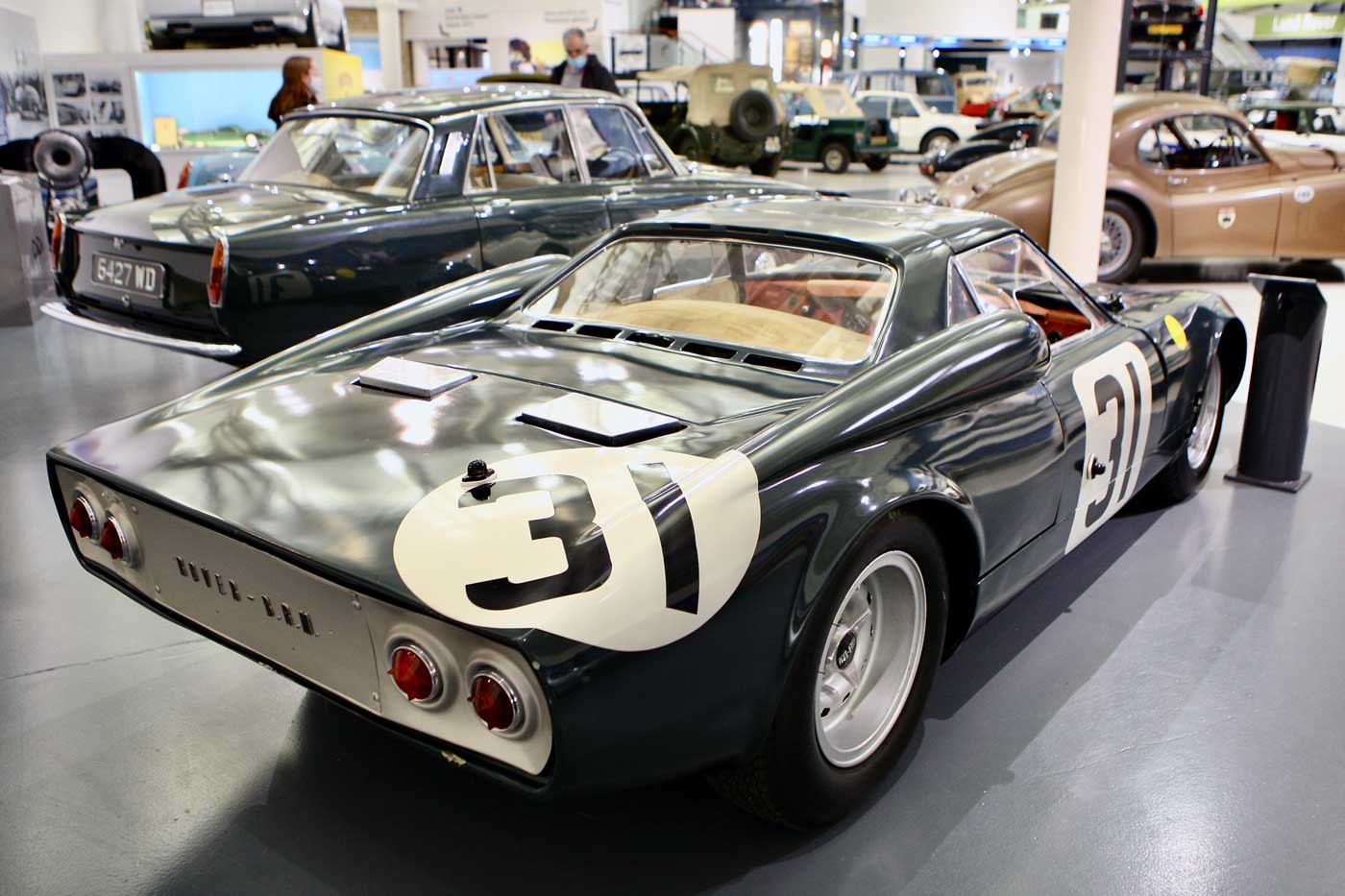
The organizers of the Le Mans 24 hour race had put up a prize of 250.000 francs for the first turbine powered car to complete a distance in excess of 3600km during the race. Rover had already demoed a turbine power at Le Mans in 1962 when their T4 drove a demonstration lap of the circuit. In 1963 Rover teamed up with BRM to produce a turbine car to enter the race and hopefully collect the prize. Based largely on the 1961 BRM F1 car that Ritchie Ginther had crashed at Monaco and driven by Ginther and Graham Hill the car easily exceeded the specified distance and collected the prize. The team said that they would have competed again in the 1964 had the car not been being badly damaged when the trailer it was on overturned whilst returning from the Test Weekend. In 1965 the team did return with a far more attractive small car powered by a much-improved engine which was entered in the 2.0 liter prototype class. Driven again by Hill but partnered this time by Jackie Stewart the car finished tenth, despite having suffered engine damage early in the race, having covered a distance of 2371 miles (284 laps).
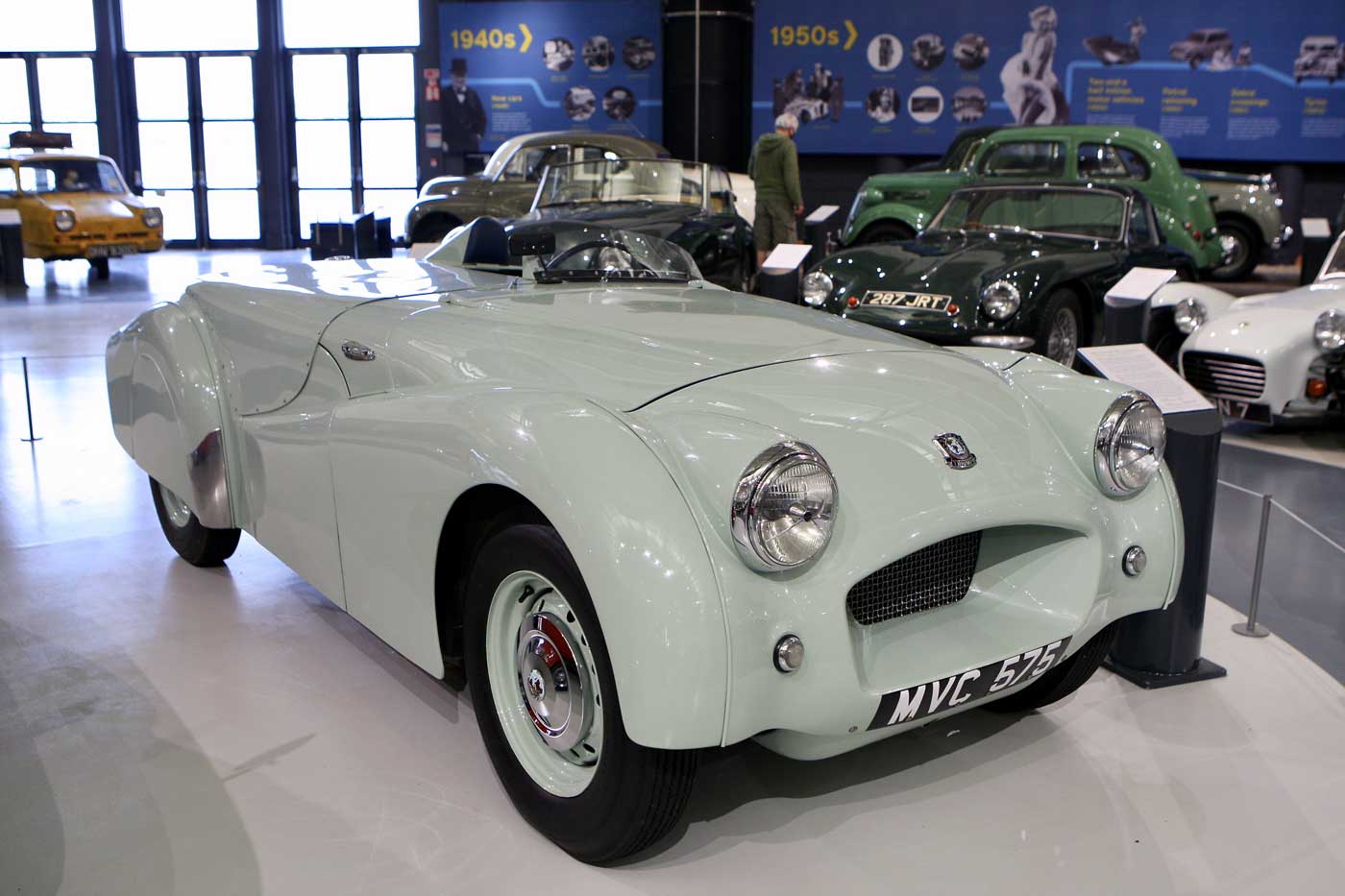
Standard, having purchased Triumph at the end of the Second World War, desperately needed a new sports car to rejuvenate the marque. A new two-seater sports car was unveiled to the public in 1952 to a very lackluster reception. The design, known as the 20TS, was quickly re-engineered with the help of their new test driver Ken Richardson. To prove the models sporting ability it was decided to try obtain a world speed record. MCV 575, based on one of the 20TS prototypes was slightly modified for the challenge, being fitted with wheel spats, an under tray, a streamlined metal cover over the cockpit and a small windscreen. The Jabbeke highway was the location for the record attempt. With Ken Richardson at the wheel the first run produced a very disappointing speed of 105 mph. Investigation found that one of the spark plug leads was loose. With all four cylinders firing Richardson took a class record with a speed of 124.889 mph.
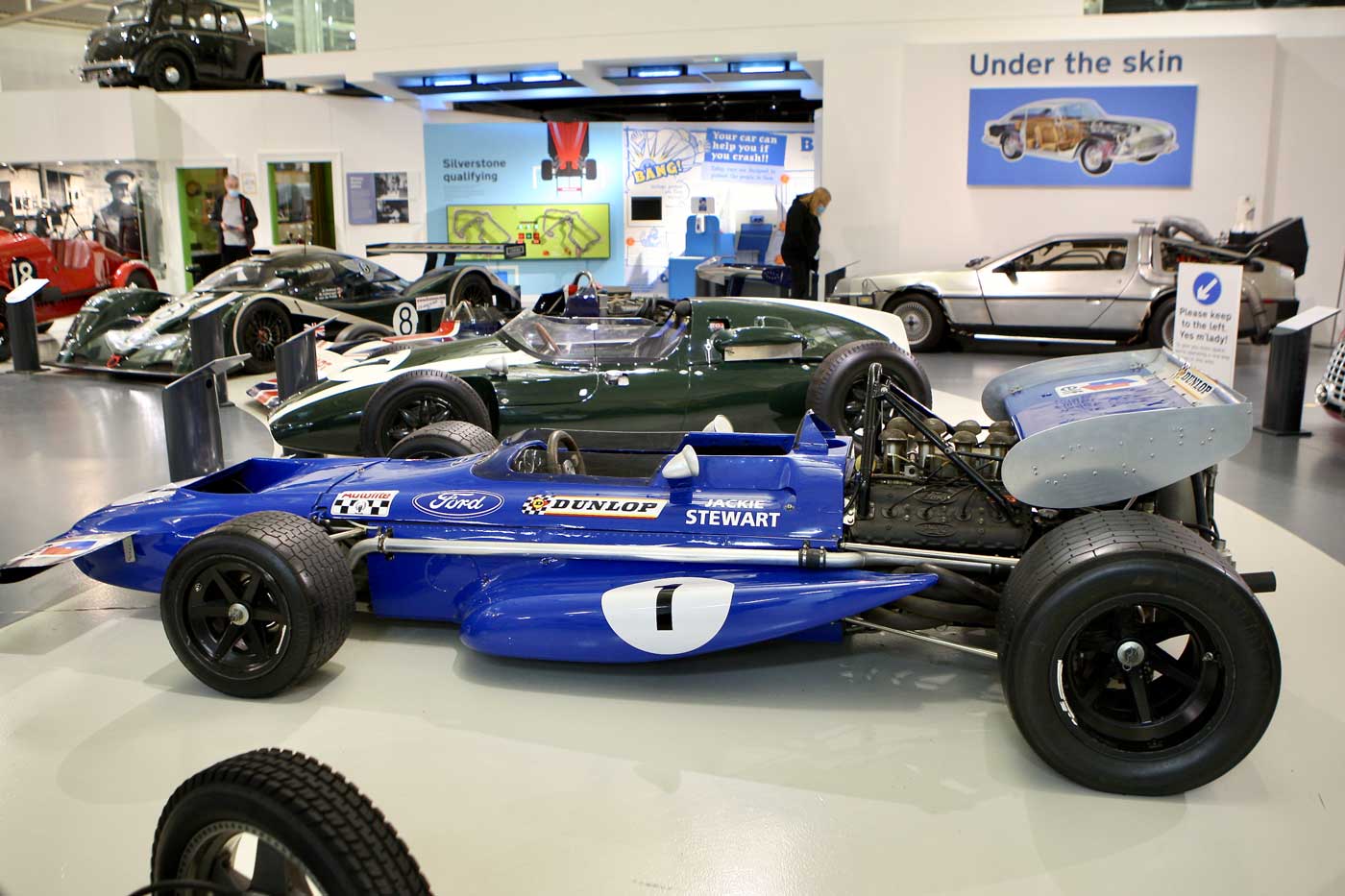
This 1970 March 701, run by Ken Tyrrell, took Jackie Stewart to second place at both the Dutch and Italian Grand Prix. Jackie, driving the sister chassis, also took victory at the Spanish race at Jarama.

The unique 1938 Issigonis Lightweight Special, was the work of Alex Issigonis and his friend George Dawson. Started in 1933, it was built using only hand tools to a design chalked onto the wall of Issigonis’s garden shed. As for a suitable power unit, whilst Issigonis had by then moved from Humber to Morris, he managed to persuade Murray Jamieson, Austin’s racing chief, to let him have a spare supercharged side valve engine. From 1938 Issigonis and Dowson campaigned the car at various hill climbs and sprints at Shelsley Walsh, Prescott, and Brighton. The only modification came in 1947 when an experimental Wolseley overhead camshaft supercharged engine was fitted which the special retains to this day.
Sidebar: The Austin 750 as a Voiturrette
Everyone loves to include the Austin DOHC 750 in the discussion of voiturettes, simply because it is such a jewel, an interesting case of what could have been, and designed by Murray Jamieson on the request of Lord Austin regardless of cost. It is a Grand Prix car in miniature, at only 750cc, begging to be upgraded to a full 1500cc and uphold the British honor in voiturette racing.
Earlier versions had used the Austin side valve engine in supercharged form with some success. Jamieson’s job was to create a new aluminum block and twin cam head, driven by gears at the rear of the engine that produced 116 hp to propel the 1000 lb. chassis. In 1936, Charles Dodson was running with the 1500cc cars in fourth at the Isle of Man races, and Walter Baumer took one to Germany to finish fifth at the Eifelennen and sixth at Berne. But Lord Austin had made his point, sold more Austin Sevens, and lost interest despite the obvious potential of the DOHC engine. It was back to bread and butter for Austin and unfortunately Jamieson lost his life in spectating at Brooklands in 1938. Three of the twin cam Austins were built, and two remain today.
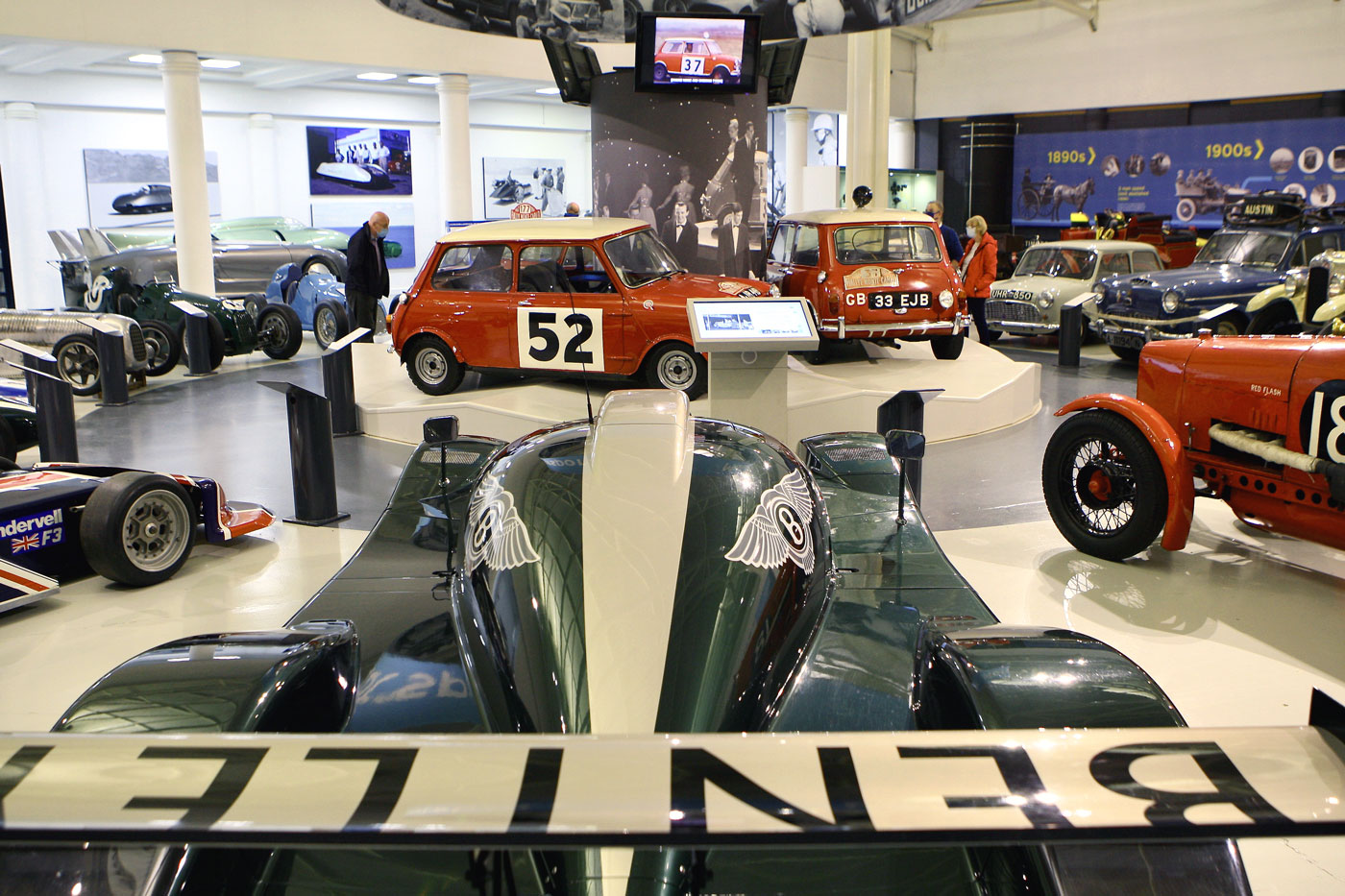
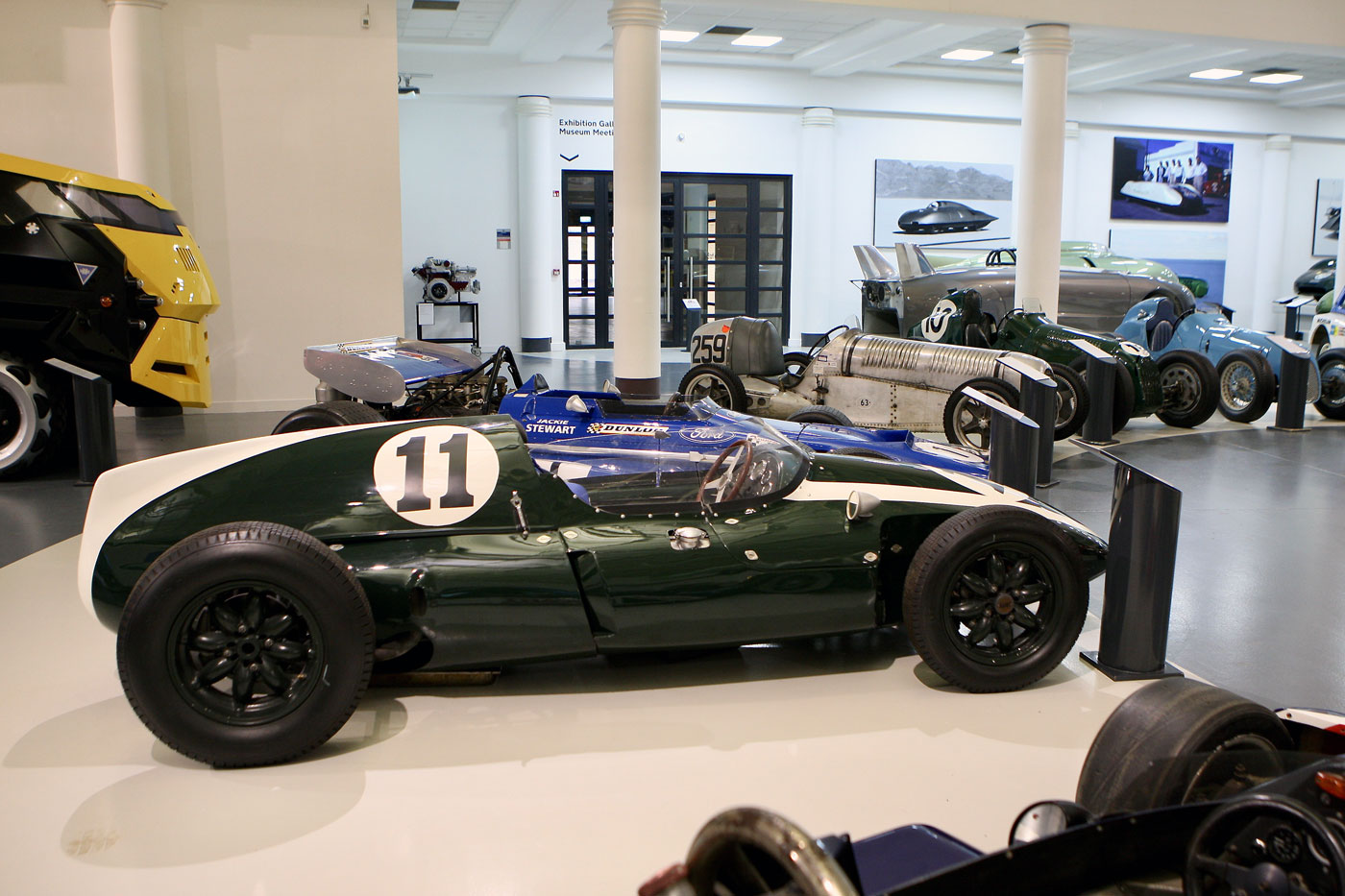
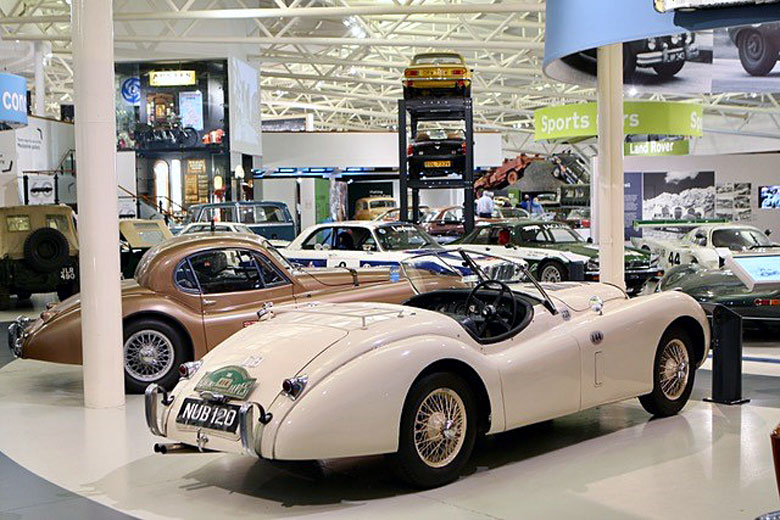


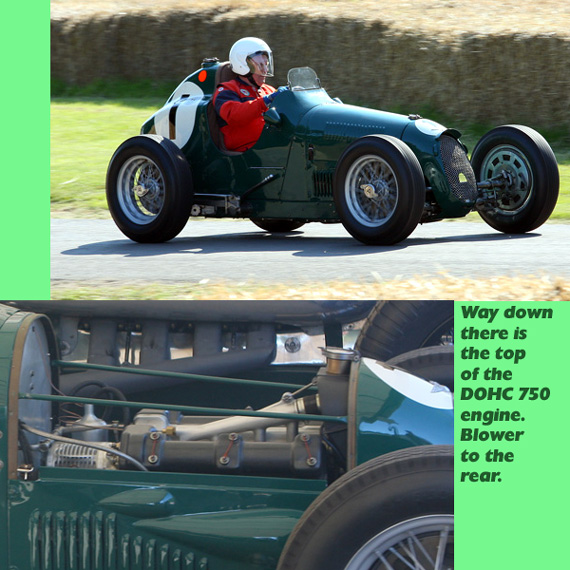
Johnathan Sharp..all by himself is worth the price of subscription!
Thanks, I needed that
IMPRESSIVE
DISPLAY OF
FINE BRITISH
ENGINEERING!
AN OLD
FAVORITE
FROM 52 WAS THE
MG OF GOLDIE
GARDNER.
BUT WHERE IS
THE VANWALL AND
BRM ..?
JIM SITZ
Excellent article, i must visit soon. I want to see the MG record cars.